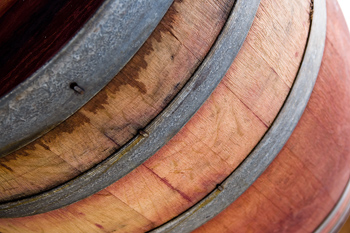Organic Materials for Rainwater Tanks

Rainwater is precious simply because it is water. You can use it for a variety of purposes from watering the plants to washing the clothes and even taking a bath. It is clean, clear and free. Still, not so many homes have rainwater tanks because of the misconception that these containers are ugly additions to the house. This is not true nowadays because of the availability of rainwater tanks in various shapes, sizes, colors and materials to suit every style preference and water need.
Plastic Tanks
We have been around plastic products for so long that there is bound to be one in every category. This is true of rainwater tanks made out of food grade plastic, which is also called polyethylene. The advantages of plastic tanks are that it is relatively light, durable and affordable. You only need to place it on a sand base to start usage, which can last anywhere from 15 to 25 years. You can purchase them at bargain basement prices especially from online sites.
Unfortunately, plastic tanks are made from petrochemicals. As any eco-friendly consumer knows, petrochemicals are not exactly the friendliest of materials to work with where Mother Nature is concerned. But if you can have it recycled, your conscience can be assuaged.
You may also have issues with the taste of the water especially under the hot sun, which many have described as, well, plastic-y. We suggest not drinking the water in this case just to be on the safe side.
Steel Tanks
Galvanized tanks have been with our society for at least 150 years. You will discover that these are often the most affordable water tank although durability may be a minus factor. Most of steel tanks will last for a maximum of 5 years before rust sets in.
The 5-year life expectancy does not apply to all galvanized tanks. You will find top-of-the-line steel tanks that will last for 10-15 years like Zincalume. Colorbond claims a 20-year life soan but it can be substantially shortened by deep paint scratches leading to faster corrosion.
Concrete Tanks
You can install concrete water tanks either above or below the ground, either of which has its merits. For example, if you install the tank below the ground, you can save space but if you can install it above the ground, you will be able to save time on cleaning the tank.
No matter the location of the water tank, you must place a polyethylene liner all around the interior of the concrete material. This way, lime will not leach and you will not end up with alkaline water. Plus, you may have problems with corrosion of the steel framework without the liner.
Fiberglass Tanks
Fiberglass is very durable materials for rainwater tanks in addition to being unaffected by chemicals. You may also install them above or below the ground. However, fiberglass tanks are more prone to algae growth and tend to crack easily. These issues are usually solved by painting the tank and making regular inspections, respectively.
Ultimately, your choice in the materials for the rainwater tank will depend on your budget as well as your sense of environmentalism. No matter which tank you choose, however, it cannot be denied that the savings you have in water consumption are well worth the price of the tank.



